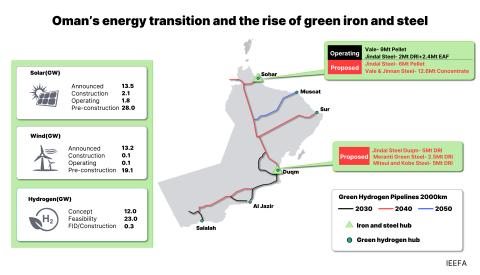Enchant’s proposed CCS project at the San Juan Generating Station: False promises and major risks
Download Full Report
Key Findings
It is extremely unrealistic to expect that San Juan will capture six million metric tons of CO2 each year
San Juan cannot be expected to operate at an annual capacity factor of 85%
90% carbon capture has not been proven over an extended number of years
Retrofitting San Juan for CO2 capture is likely to be much more expensive than enchant claims
Executive Summary
Enchant Energy and its partners tout the proposal to retrofit Units 1 and 4 at the San Juan Generating Station (San Juan or SJGS) in New Mexico with carbon capture equipment to prevent their closure in 2022 as a win-win-win proposition; one that will benefit ratepayers, the surrounding community and the environment. We believe nothing could be further from the truth: Enchant’s proposal is based on little more than a series of very unlikely, almost fantastical, assumptions that impose major risks on plant owners and the local community, burn through investors’ cash and stand to provide little to no benefit to anyone other than the promoters.
The Enchant plan, which first surfaced in 2019, calls for capturing the carbon dioxide (CO2) from the two remaining units at the San Juan station, which currently have a summer operating capacity of 847 megawatts (MW). The Enchant proposal would make the project the largest power plant carbon capture and storage (CCS) facility in the world—by far. The next largest project (one of only two power plant CCS projects in the world) is the Petra Nova plant in Texas run by NRG Energy, which captures carbon from a 240MW slipstream from Unit 8 of the W.A. Parish plant.
The scale-up relative to Petra Nova in and of itself presents an enormous risk to the project’s feasibility. But even greater risks are evident in three assumptions made by Enchant, assumptions that all must hold true for the project to have even a chance of being commercially viable. These three assumptions are:
- That the retrofitted units will operate at an average capacity factor of at least 85% for the first 12 years of the project’s operation;
- That the retrofitted plant will capture 90% of the CO2 produced at San Juan, and will do so for at least 85% of the hours every year for 12 years; and
- That the plant will be able, as a result, to sell six million metric tons1 of CO2 every year for use in enhanced oil recovery (EOR) activities in the Permian Basin in order to pay for the project.
None of these three assumptions is realistic, as we will demonstrate in the body of this report.
Both units, for example, have consistently failed over the past decade to post annual capacity factors of 85%, and both have generated less power and operated more unreliably as time has gone by. Looking ahead, plant aging and significant market changes—especially around soaring renewable generation and readily available low-cost gas—will cap the plant’s performance well below the 85% level posited by Enchant.
Similarly, operating performance at Petra Nova and the second, smaller power plant carbon capture facility, at Boundary Dam 3 in Canada, have fallen short of capturing 90% of the CO2 produced at each of these plants. There is no reason to believe that the much-larger San Juan project will be able to meet that performance level consistently for at least 85% of the hours for a period of 12 years, one of the prerequisites for Enchant’s proposal.
These two circumstances alone—market forces and technological challenges— suggest that Enchant will never be able to capture the six million metric tons of CO2 needed to make the project potentially feasible.
We also will show that Enchant has substantially understated the risks in the CO2 and oil markets, risks that we believe call into question any power plant project that relies on sales into these markets to make a carbon capture proposal pencil out. Enchant also has publicly ignored the significant financial risks associated with selling the electricity produced at San Juan and instead has claimed, incorrectly, that San Juan will sell its electricity because it is a low-cost generator, which it is not.
Enchant is selling a fantasy, one that requires believers to ignore the serious risks associated with the proposal. This may work for Enchant, which can, in the end, always opt to walk away from the project (after pocketing federal grant money). Regulators, the city of Farmington, citizens, the state of New Mexico and investors won’t have that option.
Sound resource and financial planning requires examining a range of possible outcomes, and here the Enchant proposal falls especially short, relying on a single overly optimistic set of assumptions that falsely makes the proposal seem financially feasible on its face.
The truth is that money put into the proposed San Juan project will very likely end up being money wasted. We believe the dream Enchant is selling, if it goes forward, will turn into something more closely resembling a nightmare for all concerned, and that investors and regulators should approach the project with the scepticism it deserves.















